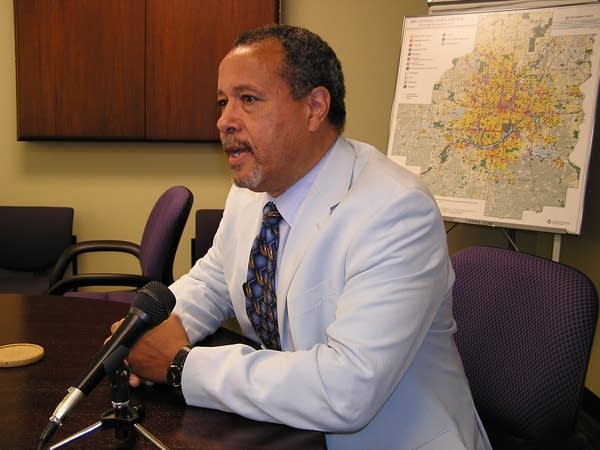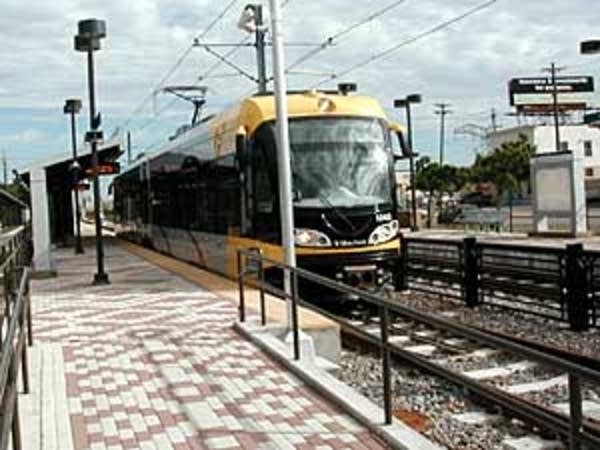Central Corridor line approved, despite U of M's objections
Go Deeper.
Create an account or log in to save stories.
Like this?
Thanks for liking this story! We have added it to a list of your favorite stories.

The university hasn't made many friends in recent weeks among light rail advocates.
"The sense of many is the university is accustomed to getting its way," said Rep. Alice Hausman, DFL-St. Paul, one of the project's chief supporters in the Legislature. "They don't often lose."
[image]
Hausman says the university is arrogantly elevating itself as the most important player along the corridor, and that is endangering the economic health of the entire region by putting the project on the line.
Turn Up Your Support
MPR News helps you turn down the noise and build shared understanding. Turn up your support for this public resource and keep trusted journalism accessible to all.
"To assume that one player has more power along the corridor, or deserves more along the corridor, doesn't serve the people of this region well," Hausman said.
No one can say for sure that the university's defiance will hurt the project. But Central Corridor supporters contend that the Federal Transit Administration could take note of the local discord and shift its attention to rival cities across the country competing for federal transit money.
University Vice President Kathleen O'Brien said the university wants to work with project staff on finding solutions. O'Brien said the U has no plans to pursue legal action.
"We're not going to recognize [the northern alignment] ... It's time to move on."
"We're interested in finding an alignment that works," O'Brien said. "As we always say, the devil's in the details. We're in the details now, but we need to have those checked off before we move forward."
The university is worried about traffic snarls, and the train's effect on sensitive research laboratories along Washington Ave.
O'Brien said the university's Board of Regents will hear a comparison of the Washington and Dinktyown routes next month. She said it would be premature to say the Dinkytown route is no longer an option.
But Metropolitan Council Chairman Peter Bell said yesterday's vote essentially kills the alternative route. The resolution directs project staff to abandon all work on the "northern alignment" preferred by the U of M.

"We're not going to recognize it. I don't know how they can do it without our involvement," said Bell. "People should understand -- the northern alignment has been studied twice. It was studied in 2001 and was found not to have merit. The U just did its second study, and it also showed it's without merit. It's time to move on."
The Met Council and other partners oppose the Dinkytown route, because it would involve reconstructing a bridge and the notoriously difficult task of negotiating with a railroad company that owns the necessary easements.
The biggest strike against the route is that it fails a federal funding test that measures the cost effectiveness of transit projects.
But while the university has been getting the most attention for opposing the route, others have been ramping up their objections as well.

On the other end of the line in St. Paul, Minnesota Public Radio sent the Met Council a letter this week expressing its uneasiness about the route.
MPR is concerned that the vibrations caused by the trains running down Cedar St. in downtown St. Paul could affect the network's ability to broadcast from its main building which is located on that street.
Like the university, MPR says it supports the light rail project, but not the alignment.
In addition, two community groups say they're casually considering legal action if they don't get what they want from the project.
Veronica Burt represents a group of African-American residents in St. Paul's Summit-University neighborhood. She said community members are concerned about the reduction in bus service along University Ave. after light rail. They also fear that rising property taxes could force longtime residents out.

But Burt recognizes her group doesn't have the same clout as the University of Minnesota.
"We're realizing that the issues we're raising are not getting the same kind of attention from the Metropolitan Council," Burt said. "They're not sitting down and figuring out what kind of mitigation needs to be put in place before the final proposal goes to the feds. That is a major disturbance for us."
In addition, the Marcy Holmes Neighborhood Association in Minneapolis is meeting tonight to discuss its concerns. The group opposes the Washington Ave. route, worried that tens of thousands of cars would disperse into neighboring streets.
Both groups say they would benefit from a delay in the project, even if it adds tens of millions of dollars to the pricetag.
Project planners say they'll be able to focus better on those community concerns, now that they've finally settled the university issue.




